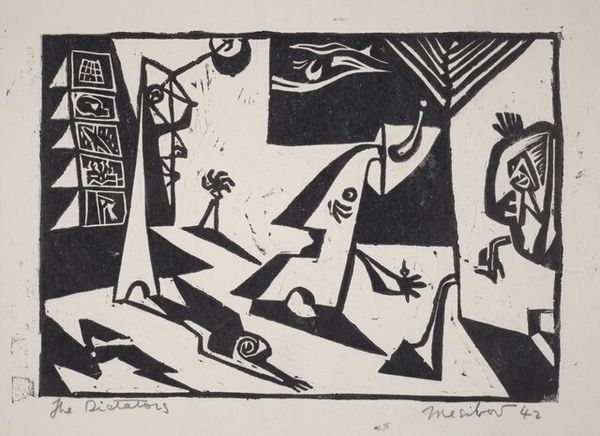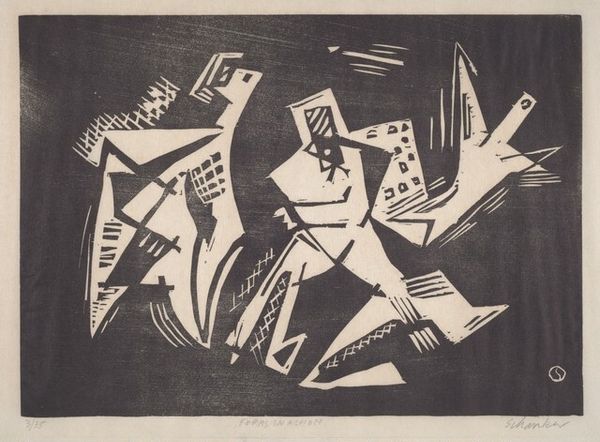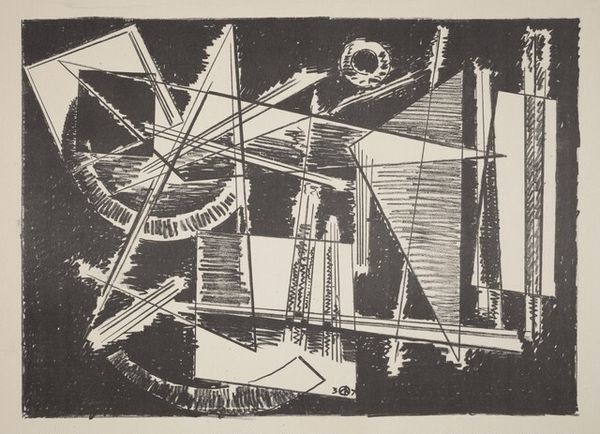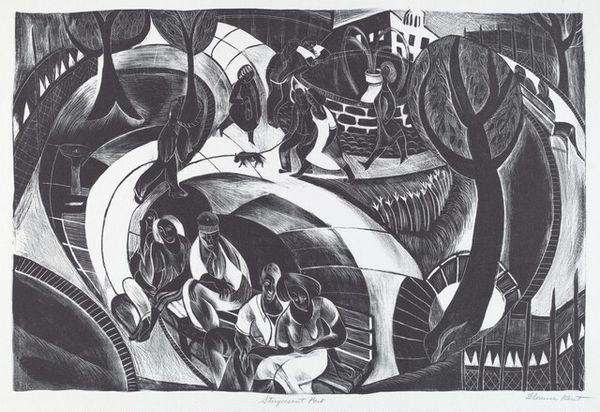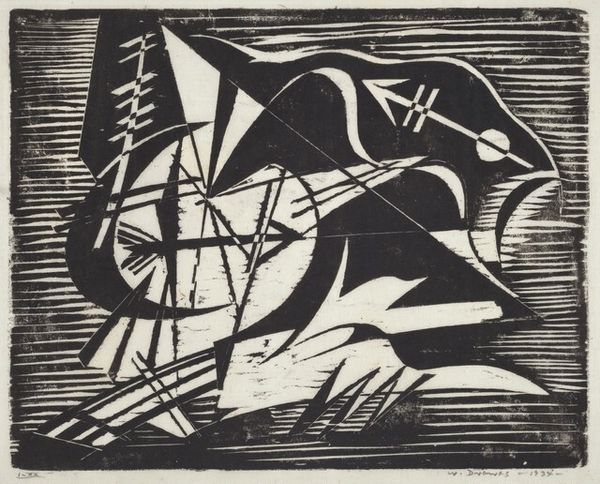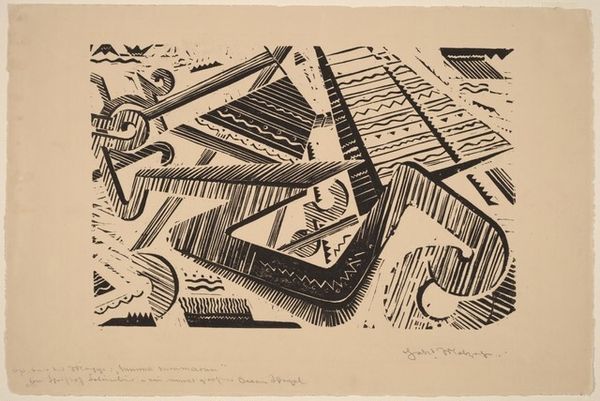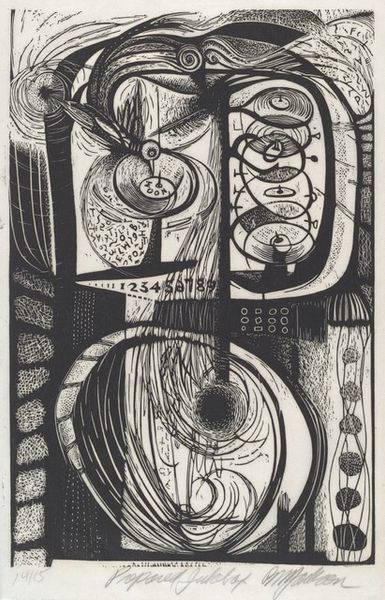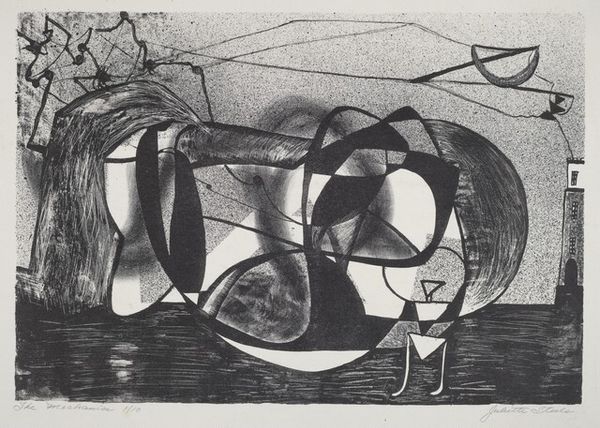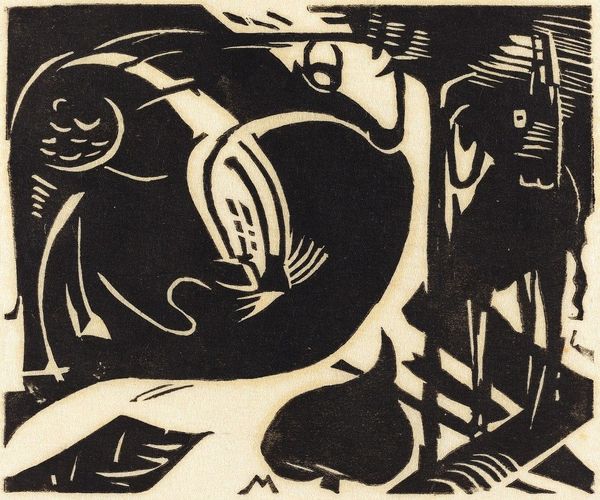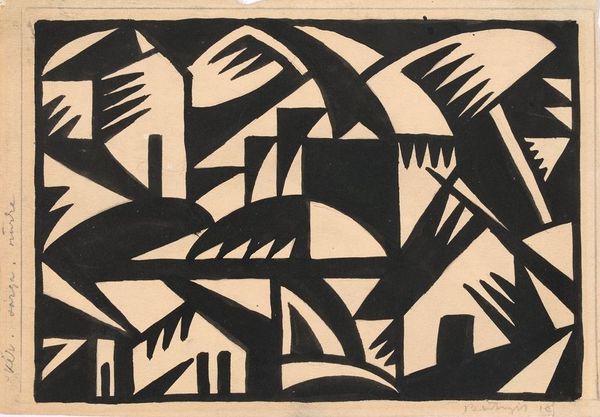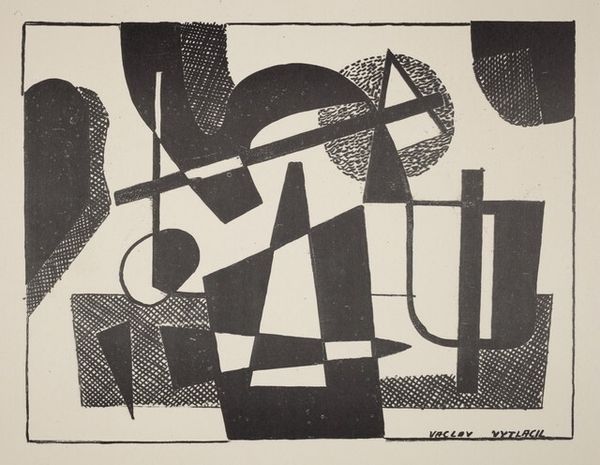
graphic-art, print, linocut, woodblock-print
#
graphic-art
# print
#
linocut
#
linocut print
#
woodblock-print
#
geometric
#
abstraction
Dimensions: image: 75 x 126 mm sheet: 115 x 141 mm
Copyright: National Gallery of Art: CC0 1.0
Editor: This linocut print, simply titled "Still-Life Drawing," was created in 1939 by Morris Atkinson Blackburn. It’s a powerful example of abstraction in the lead up to World War II. Curator: My first thought is 'dynamism'. Look at the stark black and white contrast; it generates so much visual energy, as though these shapes are about to burst from the frame. Editor: Yes, the high contrast emphasizes the textures achieved through the linocut technique. You can practically feel the artist carving into the linoleum, removing material to reveal the design. I think it mirrors the socio-economic environment in the 1930s, doesn't it? It feels like it is born from some radical ideology. Curator: I see echoes of Cubism in the fragmented forms, but there's also a primal energy that evokes something more ancient. Consider that circular shape to the right. Is it the moon? Or does it reference a deeper, universal symbol? Blackburn does suggest it's an apple through the implied form, but also plays with its archetype. Editor: I would wager these fragmented shapes and composition serve as commentary to the rapid mechanization and increasing availability of materials, particularly printmaking. In this context, Blackburn’s reliance on hard cut, angular designs are clearly linked to industry and mass-manufacture of commodities that redefined culture at the time. Curator: But still, these domestic objects hint at the fragility of life; like an "ars memoria," prompting reflection on passing time. That distillation suggests something less about materialism and more of a study of shape. Editor: Perhaps Blackburn is prompting questions about access; questions about consumerism itself as symbolic to society in times of both prosperity and desperation. His still life isn’t about nature; it is about commerce and the act of choosing commodities, something that many people could not do during the time of its creation. Curator: Agreed. This image is potent, transcending both the domestic and divine. Its beauty resonates on many levels, drawing upon cultural heritage as much as formal innovation. Editor: Thinking of how "Still-Life Drawing" fits within a broader context gives insights into printmaking's cultural significance. Thanks to the material’s relative accessibility in manufacture, many more communities were suddenly capable of participating and contributing to culture through the printed arts.
Comments
No comments
Be the first to comment and join the conversation on the ultimate creative platform.
